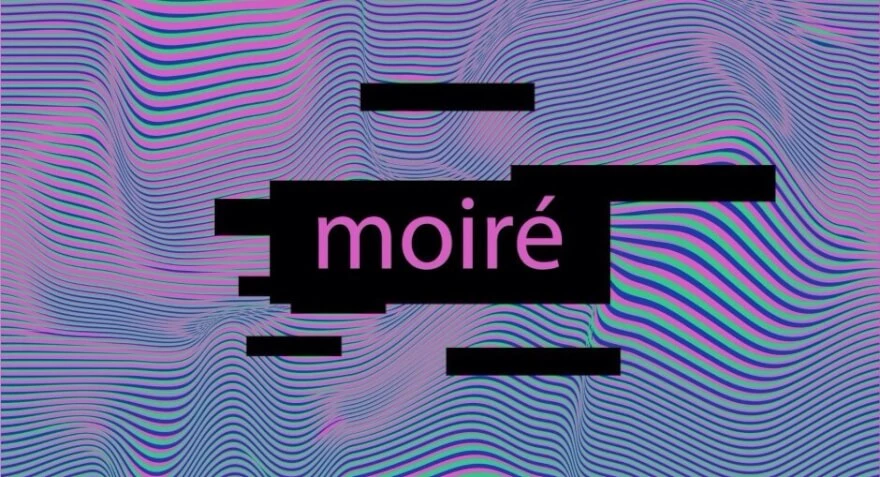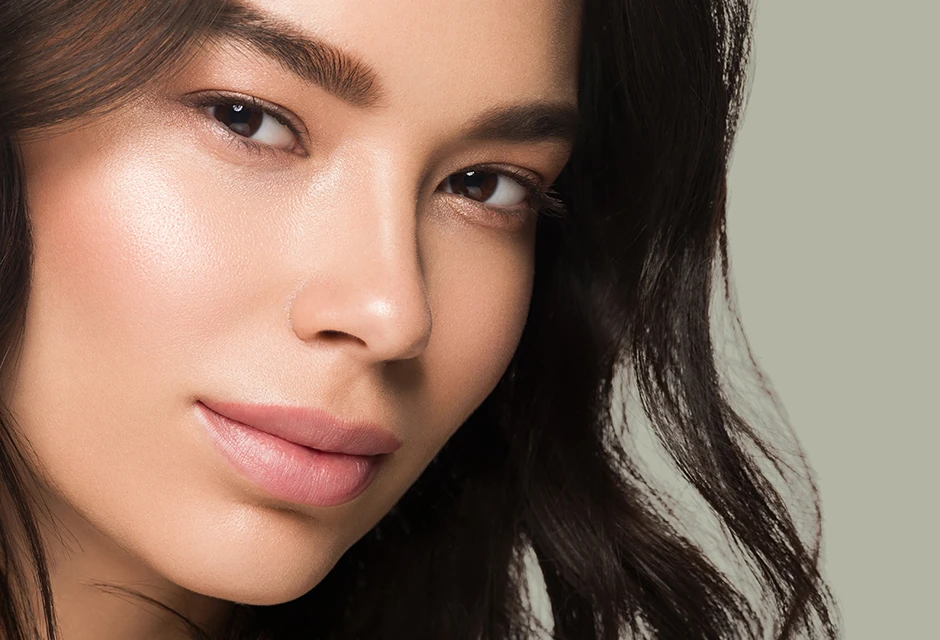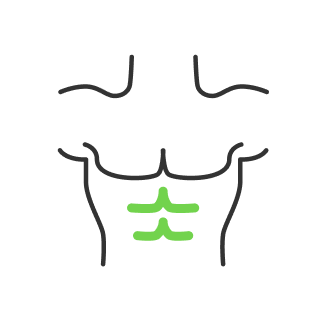What is moire in photography?

- What is moire in photography?
- Decrease the lens aperture values to avoid distortion.
- Change the focal length with a different lens.
- Play with a focus point.
- Change the angle and distance between the camera and the subject.
- Reduce problems in RAW files with a moiré camera reduction solution.
- What is moire in digital photography and how to face it?
- Overlay moire photography with professional software.
The moiré effect is formed when two systems of contrasting stripes are superimposed, in places where stripes of one system fall into the gaps between stripes of another system.
The simplest moire occurs when two systems of equidistant parallel lines intersect at a small angle. A small change in the angle of rotation of one of the systems leads to significant changes in the distance between the moiré elements. Also, moiré pattern photography is formed when the step size of one of the systems is slightly different from the other. Moreover, the smaller the difference in pitch, the greater the distance between the stripes.
Imagine a lighthouse that sends out a pulse of light every 5 seconds and a camera (or other observers) that sees it for three seconds and then blocks out to observe it for three seconds:
lighthouse: * .... * .... * .... * .... * .... * .... * .... * ... observer: *** ... *** ... *** ... *** ... *** ... *** ... *** observed pattern: * ................... * .... * .... * ........

A very uneven picture is observed due to temporal overlap caused by the sample rate being close but different from the observed phenomenon. This is why the wheels of the carriages can rotate in the opposite direction when observed with a video camera with a fixed frame rate. You may have already seen photo moiré in the images, a strange wavy detail that is not present on the subject. It is most often seen in detailed, high-contrast color images. It usually appears when photographing fabrics, hair, or scenes that contain repetitive details such as pronounced vertical lines in architecture.

1. What is moire in photography?
The light coming from the object is not registered by all RGB colour sensors, which leads to a change in the stored colors. In digital images, moiré photo and color distortion usually appear together.
Many digital cameras use an optical low pass filter to reduce aliasing and color distortion.
If you understand the nature of these effects, as well as the reasons for their occurrence, these problems can be reduced when shooting or post-processing. Consider the following tips to improve shooting skills.

2. Decrease the lens aperture values to avoid distortion.
The optimum resolution for each lens is achieved at a specific aperture value. It is usually achieved when the aperture is set 2-3 stops lower than the maximum aperture. Over-closing (beyond optimal resolution) will result in diffraction. This will decrease the resolution slightly, but at the same time, color distortion will decrease. Such a tool is widely used by both amateurs and professionals.
To check if there are such phenomena in the picture, it is best to view images on a computer screen at full size (100%). When pictures are zoomed out, false moiré image and color irregularities may occur, resulting from the pattern on the monitor tube (or panel).
Such effects can appear in images from all digital cameras and scanners, but they are more likely to appear in images from digital SLR cameras since in this case the lens, sensor, and software are designed to obtain high sharpness, a maximum number of pixels, and most accurate image.
The distortion may not be corrected, but you can get rid of it by knowing the circumstances under which the problem occurs and how to repair it.

3. Change the focal length with a different lens.
This method is extremely efficient when you need to create different images from the same frame. Use a lens with a different focal length to reduce or eliminate camera moiré and color distortion.

4. Play with a focus point.
Moiré in photography and aliasing is caused by a very sharp focus and high detailing of pictures. If you manually practice lens adjustment and set the focus slightly in front of or behind the focus point, you can avoid color transitions.

5. Change the angle and distance between the camera and the subject.
Since distortion effects are influenced by the angle at which the picture is taken, as well as the distance between the camera and the subject, the slightest change can eliminate or remove this problem. Move the camera left and right, up or down, or move a little closer or further away. Use this technique to shoot several frames and control if the interference grid is still there.

6. Reduce problems in RAW files with a moiré camera reduction solution.
Many digital cameras use an optical low-pass filter (anti-alias) to reduce color distortion.
A pre-matrix filter that blurs the image a little is often referred to as an anti-alias or optical low-pass filter. The filter itself serves to reduce color artifacts and more faithfully convert a monochrome RAW image to color.

7. What is moire in digital photography and how to face it?
It should be noted that the level of influence of the "anti-alias" filter is different for cameras of different manufacturers. This does not mean that one camera is less sharp than the other. You just don't have to set a higher Sharpness value to achieve a certain sharp spot. Some cameras have as many as three low-pass filters in front of the matrix.
Some cameras don't have an anti-alias filter at all. But you can pay for it. A Foveon three-layer matrix is worth mentioning. Unlike the mosaic brush, here each pixel is "fair" and captures all three color components (RGB). In theory, such a matrix gives the sharpest picture and provides the most accurate detail at 100% image scale.

8. Overlay moire photography with professional software.
De-mosaic software like Photoshop brush and Lightroom channel attempt to restore maximum detail can do so to some extent. In the process of looking for the smallest details, it can narrow the line to such an extent that it acts as if only one sensor is illuminating well, rather than the true color of the line itself. Different algorithms produce false rainbows to varying degrees, but generally, algorithms that recover more detail are also more likely to produce false background in photography moire.
To conclude we can say that moire effect photography is an interference pattern. It is usually observed in fine detail in women's clothing or in repeating designs in architecture. It can be caused by a scene that contains areas of repetitive details that exceed the camera's resolution. Anti-aliasing filters reduce or eliminate this distortion and reduce the image sharpness.
Co-founder of RetouchMe. In addition to business, he is passionate about travel photography and videography. His photos can be viewed on Instagram (over 1 million followers), and his films can be found on his YouTube channel.
Moreover, his profile is featured on the most popular and authoritative resource in the film industry — IMDb. He has received 51 international awards and 18 nominations at film festivals worldwide.

with RetouchMe














